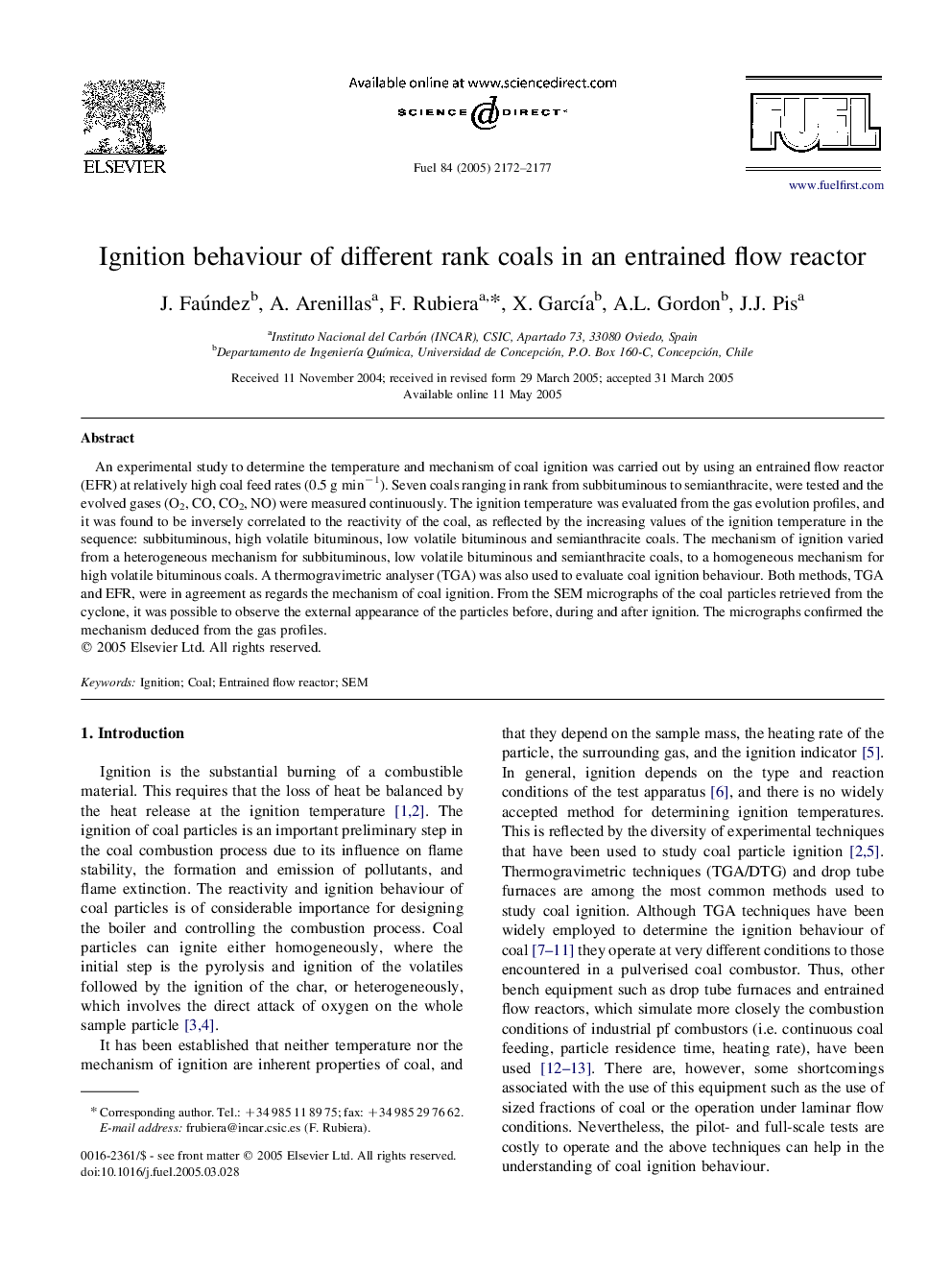| Article ID | Journal | Published Year | Pages | File Type |
|---|---|---|---|---|
| 208822 | Fuel | 2005 | 6 Pages |
An experimental study to determine the temperature and mechanism of coal ignition was carried out by using an entrained flow reactor (EFR) at relatively high coal feed rates (0.5 g min−1). Seven coals ranging in rank from subbituminous to semianthracite, were tested and the evolved gases (O2, CO, CO2, NO) were measured continuously. The ignition temperature was evaluated from the gas evolution profiles, and it was found to be inversely correlated to the reactivity of the coal, as reflected by the increasing values of the ignition temperature in the sequence: subbituminous, high volatile bituminous, low volatile bituminous and semianthracite coals. The mechanism of ignition varied from a heterogeneous mechanism for subbituminous, low volatile bituminous and semianthracite coals, to a homogeneous mechanism for high volatile bituminous coals. A thermogravimetric analyser (TGA) was also used to evaluate coal ignition behaviour. Both methods, TGA and EFR, were in agreement as regards the mechanism of coal ignition. From the SEM micrographs of the coal particles retrieved from the cyclone, it was possible to observe the external appearance of the particles before, during and after ignition. The micrographs confirmed the mechanism deduced from the gas profiles.
